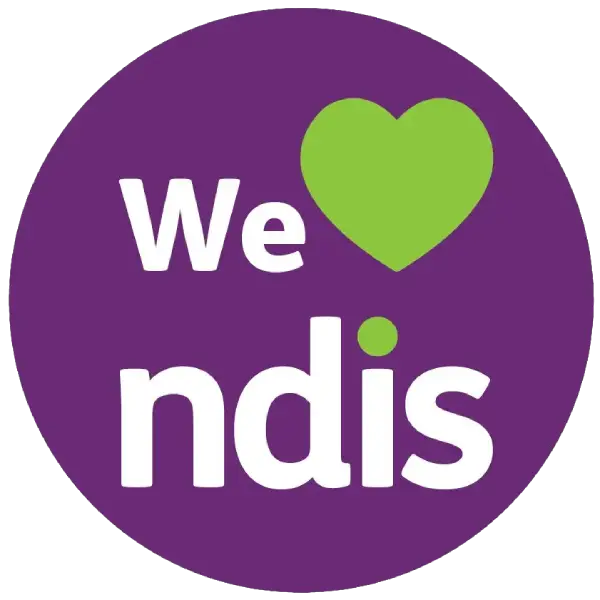Enquire about our SIL vacancies
Navigating Specialist Disability Accommodation (SDA) in Melbourne can be complex, but understanding the essentials is crucial for NDIS participants with high support needs and their families. Here’s a detailed breakdown:
What is SDA (Specialist Disability Accommodation)?
-
Core Concept: SDA refers to purpose-built or significantly modified housing designed for individuals with extreme functional impairment or very high support needs. It’s about the physical dwelling, not the support services delivered within it.
-
Goal: To provide safe, accessible, and appropriate housing that enables participants to live more independently, receive necessary supports effectively, and improve their quality of life.
-
Funding Source: Primarily funded through the participant’s NDIS plan under the “Capital Support” budget, specifically for the dwelling itself. Support services, such as SIL (Supported Independent Living), are funded separately.
Who is Eligible for SDA Funding in Melbourne?
Eligibility is strict and assessed by the NDIS based on extreme functional impairment or very high support needs. This typically means:
-
Requiring specialist housing solutions due to the nature or intensity of your disability.
-
Needing significant home modifications beyond what’s reasonable under other NDIS funding.
-
Having complex support needs requiring specific building design (e.g., hoists, wide corridors, assistive technology integration).
-
Meeting specific NDIS SDA criteria related to mobility, self-care, self-management, or cognitive/behavioural needs that necessitate a specialised home environment.
-
Key Point: Not everyone with a disability qualifies. An assessment by an NDIS planner, often informed by detailed reports from Occupational Therapists (OTs) and other specialists, determines eligibility.
How SDA Funding Works (The Money Flow):
-
NDIS Pays the Provider: The NDIS pays an SDA payment directly to the registered SDA provider Melbourne (the property owner) based on the dwelling’s design category and building type. This payment covers the cost of providing the specialised housing.
-
Participant Pays Rent: The participant living in the SDA home pays a reasonable rent contribution (RRC) to cover the cost of living. This is similar to rent in the private market and is calculated based on:
-
The Commonwealth Rent Assistance (CRA) rate (if eligible for Centrelink).
-
25% of the Disability Support Pension (DSP) base rate.
-
Plus 100% of any Commonwealth Rent Assistance (CRA) received.
-
-
Separate SIL Funding: Funding for the support staff and services you need inside the home (like personal care, community access help, skill development) comes from a separate part of your NDIS plan, usually Supported Independent Living (SIL) or other Core Supports.
SDA Design Categories & Building Types in Melbourne:
-
Design Categories (Defines the Physical Features):
-
Improved Liveability: Enhanced physical access and sensory features for people with sensory, intellectual, or cognitive impairments (e.g., clear lines of sight, colour contrast, good acoustics).
-
Robust: Highly durable and resilient design to minimise damage and safety risks, often for people with complex behaviours (e.g., reinforced walls, ligature-resistant fittings, secure outdoor areas).
-
Fully Accessible: For people with significant physical impairment requiring high physical access (e.g., wheelchair accessible throughout, step-free showers, ceiling hoists).
-
High Physical Support: Includes all Fully Accessible features plus additional provisions for people with very high physical needs (e.g., provision for ceiling hoists, assistive technology readiness, emergency power solutions, wider doorways).
-
-
Building Types (Affects SDA Payment Level):
-
Apartment: Units within multi-story developments.
-
Villa/Group Home: Detached or semi-detached dwellings, often shared by 2-5 participants.
-
House: A standalone dwelling typically modified for one participant or a small family.
-
Duplex: Two houses sharing a common wall.
-
Generally, apartments attract the highest SDA payments, followed by villas and houses, then duplexes.
-
SDA in Melbourne: Specific Considerations
-
Location & Availability: Demand often outstrips supply. Availability varies significantly across Melbourne’s suburbs. Consider proximity to family, support networks, community facilities, transport links, and healthcare services. New developments are ongoing, but waiting lists are in place.
-
Diverse Housing Stock: Melbourne offers a range of options, from shared group homes in established suburbs to modern, fully accessible apartments in new developments. Choice is increasing but can be limited depending on your specific design category needs.
-
Providers: Melbourne has numerous registered SDA providers, ranging from large specialist disability housing organisations to smaller, boutique providers and private investors. Research provider reputation, management style, and property quality is essential.
-
Victorian Building Regulations: All SDA homes must meet the NDIS SDA Design Standard and comply with Victorian building codes and regulations.
-
Shared vs. Solo Living: SDA encompasses both shared housing (with other NDIS participants) and single-occupancy dwellings. Your needs, preferences, and compatibility with others will influence this choice.
Key Steps to Accessing SDA in Melbourne
-
Confirm Eligibility: Discuss your housing needs with your NDIS planner, Support Coordinator, or Local Area Coordinator (LAC). Evidence from OTs and specialists is crucial.
-
Secure SDA Funding: If eligible, SDA funding (designated explicitly for the design category) will be included in your NDIS plan.
-
Find a Suitable Property:
-
Use the SDA Provider and Vacancy Finder on the NDIS website.
-
Work closely with your Support Coordinator.
-
Contact registered SDA providers directly.
-
Research online listings (specialist disability housing websites).
-
-
View Properties & Assess: Physically inspect potential homes. Check they meet the required design standard, are well-maintained, and feel like a good fit. Consider location, shared facilities (if applicable), and management.
-
Apply & Secure Tenancy: Apply through the provider. This usually involves interviews and assessments to ensure compatibility, especially in shared settings. Sign a standard Residential Tenancy Agreement (RTA) under Victorian law.
-
Arrange Supports: Ensure your SIL or other support funding is in place and coordinated to start when you move in.
Tenant Rights & Responsibilities
-
Rights: As an SDA tenant in Melbourne, you have the same rights as any other Victorian renter under the Residential Tenancies Act. This includes quiet enjoyment, repairs and maintenance, privacy, and protection from unfair eviction. You have choice and control over where you live and who provides your supports (separate from the housing provider).
-
Responsibilities: Paying rent (RRC) on time, caring for the property reasonably, adhering to the lease agreement, and communicating with the housing provider.
Challenges & Considerations in Melbourne
-
Supply Shortages: Finding suitable, available properties, especially in preferred locations or specific design categories, can be difficult and involve waiting times.
-
Navigating Complexity: The interplay between SDA funding, SIL funding, rent contributions, and provider agreements is complex. A good Support Coordinator is invaluable.
-
Finding the Right Match: Ensuring the home design, location, provider management style, and (if shared) compatibility with housemates align with your needs requires careful research.
-
Provider Quality: Standards vary. Thoroughly vet providers and inspect properties.
-
Ongoing Costs: While SDA covers the dwelling, participants are responsible for standard utilities (electricity, gas, water usage, internet) and their RRC.
Key Takeaways for Melbourne:
-
SDA is about specialist housing, funded by the NDIS for those with very high support needs.
-
Eligibility is strict and requires NDIS assessment.
-
Participants pay Reasonable Rent Contribution (RRC), while the NDIS pays the SDA payment to the provider.
-
SIL funding is separate and pays for in-home support.
-
Melbourne offers a diverse range of options but faces supply chain challenges.
-
Location, design category, and building type are critical factors.
-
Tenant rights are protected under Victorian tenancy law.
-
Thorough research, expert advice (Support Coordinator), and patience are essential for success.
Before making any decisions, consult with your NDIS planner, Support Coordinator, and independent advisors familiar with the Melbourne SDA landscape. Visiting potential homes and speaking to current tenants can also provide invaluable insights.
Sophie Mitchell
Sophie Mitchell is a passionate Australian healthcare writer with over 10 years of experience in health and wellness communications. Based in Melbourne, Sophie combines her academic background in Health Sciences with her talent for storytelling to produce compassionate, informative, and easy-to-understand content for people from all walks of life.
Specialising in topics like aged care, NDIS support, disability services, and mental health, Sophie brings a warm, empathetic tone to her writing—making complex healthcare concepts approachable. Her work is driven by a deep belief in equitable healthcare access and empowering individuals through knowledge.
When she’s not writing, you’ll find Sophie volunteering at local community health centres, exploring coastal trails, or curled up with a good book and a flat white.
Recent Posts
Top Rated Services
Get A Quick Quote Now
Enquire about our SDA vacancies
Enquiry Now
Consult Our Care Experts
Grab Your Free Consultation Today!
Or give us a call to speak to someone now
1300 668 655









